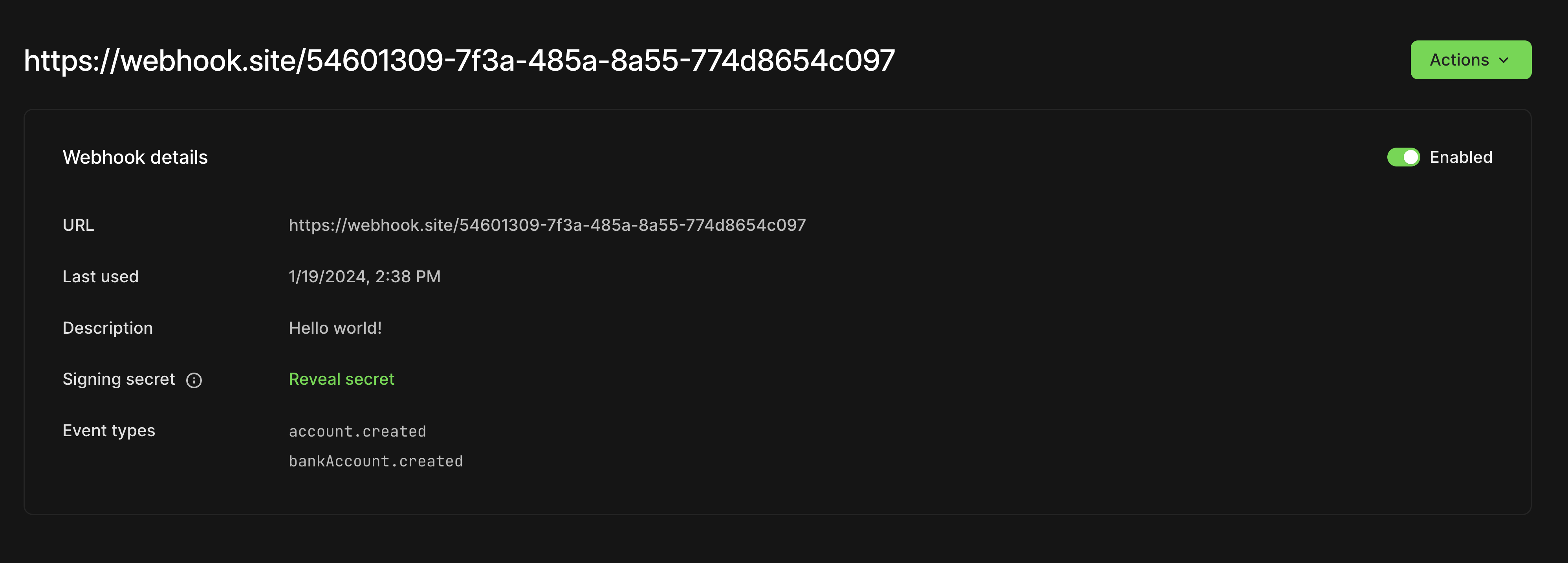How to set up webhooks
Determine what events to subscribe to
To minimize unnecessary burden on your server, only subscribe to events you need. See our webhook events guide for a full list of events and payload examples.Create a webhook endpoint on your server
Set up an HTTPS endpoint that accepts and processes HTTPPOST calls. A URL with HTTPS is required.Register your endpoint in the Moov Dashboard
In the Moov Dashboard, navigate to Developers and select Webhooks. There, you can include your endpoint URL, an optional description, and which events you’d like to subscribe to.
Test the endpoint
In the Moov Dashboard, you can trigger a test event to your webhook by selecting the Send test webhook action.

The target server URL will receive a test payload that looks like this:
|
|
Verify events were sent by Moov
Every event Moov sends to a webhook endpoint includes a signature which allows you to verify that Moov (and not a third party) sent these events to your service.
Use the following steps to construct your hash and compare it against the event signature:
- Get the signing secret from the Moov Dashboard.
- Get the following header values from the received
POST:X-TimestampX-NonceX-Webhook-IDX-Signature
- Prepare the string:
{X-Timestamp} + "|" + {X-Nonce} + "|" + {X-Webhook-ID}. - Calculate the expected signature using the hashing algorithm HMAC-SHA512 with the signing secret and string from step 3.
- Check the expected signature matches the value set in
X-Signature.
If the hash you created matches the value of the X-Signature header, you know that the event came from Moov. Otherwise, your service should discard the event.
See the example below:
|
|
Best practices
We recommend implementing the following best practices when using webhooks with Moov.
Subscribe to a minimum number of events
To optimize performance and avoid overloading your server, subscribe to a minimum number of events. Alternatively, you can set up multiple webhooks subscribed to specific event types.
Respond within 5 seconds
If Moov does not receive a 2xx response from your server within 5 seconds, we’ll consider the delivery of the webhook event as failed. Moov will retry the webhook multiple times, for up to 24 hours. If webhook servers return a 404 after the last retry, the webhook will become disabled.